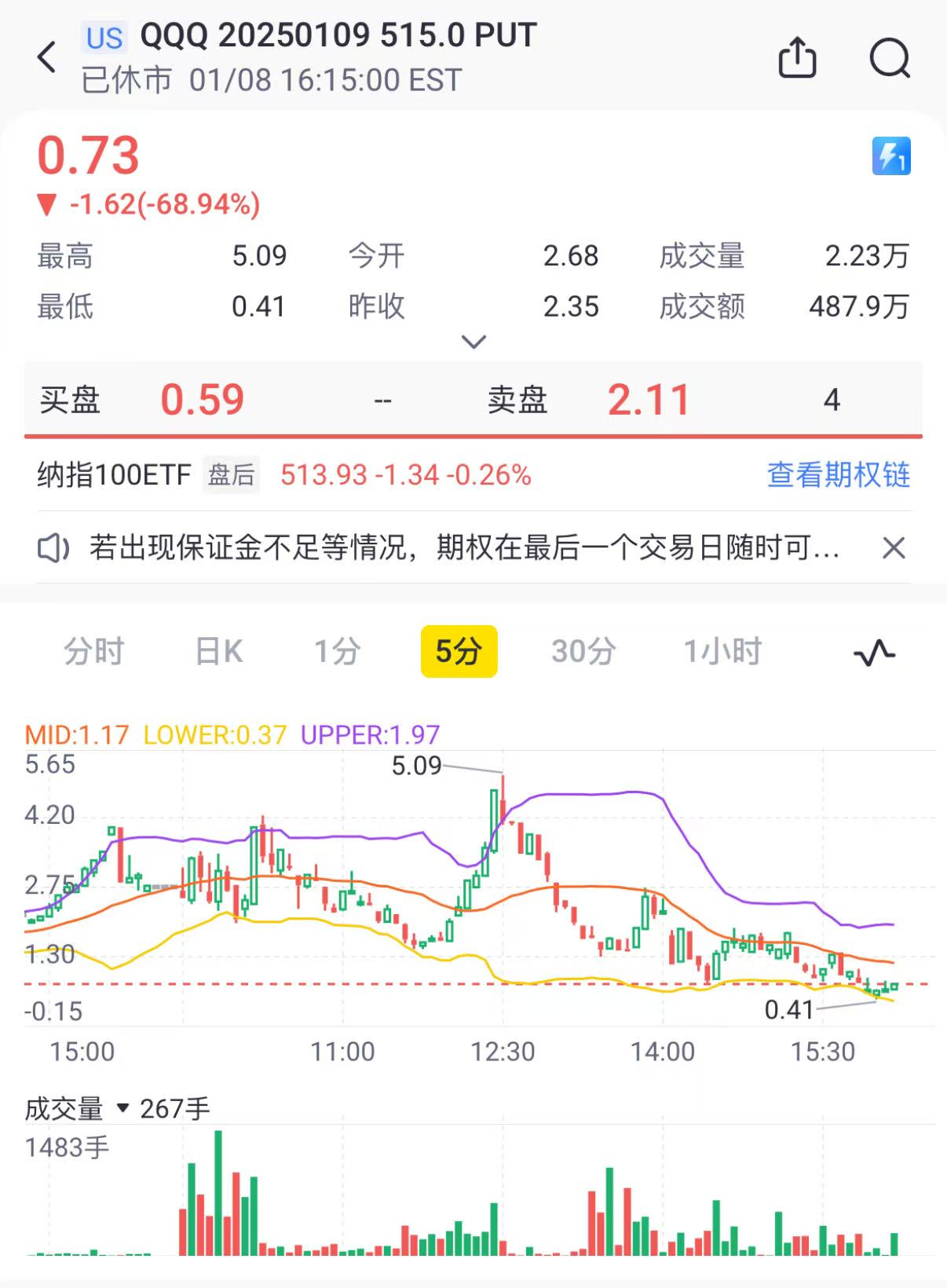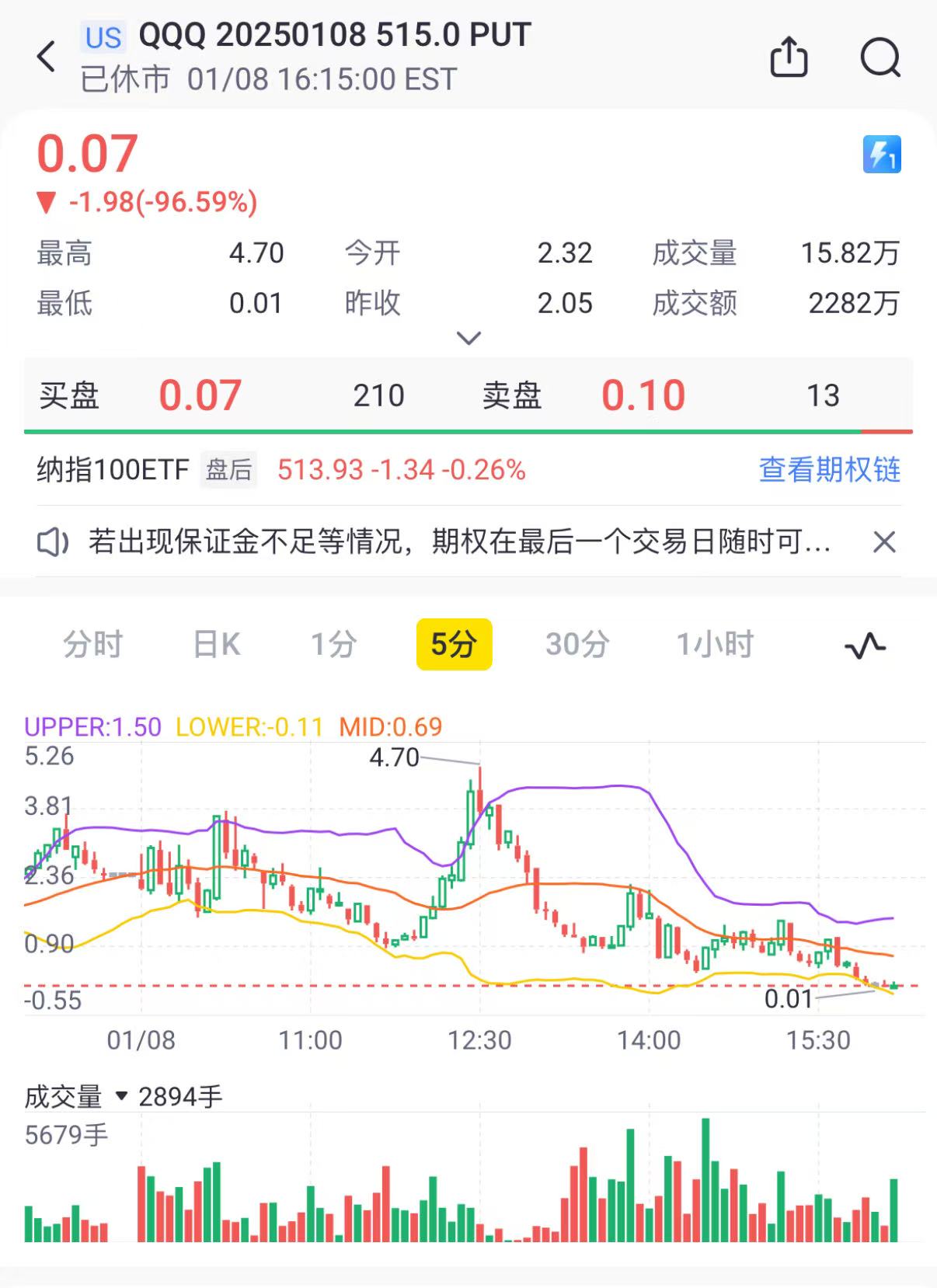Since January 9 is a special "closed day" this year, there are some arbitrage opportunities.
On January 8, there were some arbitrage opportunities in the $Invesco QQQ(QQQ)$ expiration dates of January 8 and January 9 for two at-the-money (ATM) options (mainly focused on the 515 strike).Because of the January 9 vacation, the options expiring on January 9 will settle at the January 8 closing price, and the theoretical value of the two options as calculated by the BSM model should be the same.
However, a spread occurs.
Therefore, if one buys 1.8 of the 515's PUT and sells 1.9 of the 515's PUT at the same time, one can easily eat the Premium.
As an analogy, at the close of trading on January 6, QQQ's 515's PUT for January 8 expiration averaged $0.61, while the PUT for January 9 expiration at the same price was $0.66.
The operation is also theoretically risky:
Uncertainty of what the final closing price will be at, with factors to consider including: extreme price volatility in the $Nasdaq 100 Index (NDX)$ doomsday (which has occurred many times historically), tracking error of ETFs and indices, option spreads, etc;
Uncertain if the buyer of the Sell PUT will exercise the option early (given that 0DTE is basically a doomsday option), though historically the actual exercise percentage has been low;
Uncertain if this spread is ultimately mean-reverting (convergence)
Personally, I'm thinking there could be a couple of reasons for this
Liquidity issues for options at different prices, with more trading volume on January 8 (Wednesday expiration) than January 9 (Thursday expiration, which is closed again);
Institutional's in the current quantitative-dominated market will strictly follow the calculated prices in the algorithm, however, may not have paid too much attention to the sudden January 9 temporary market closure day;
In the case of liquidation, there is a difference in the expiration date of the exercise, so there may be a small number of "forfeited" buyers;
The specificity of 0DTE relative to traditional options also factors into the source of these spreads:
Hedging demand may push option prices higher.As a hedging tool, many institutional traders use 0DTE options as a short-term exposure in their portfolios, especially during times of increased market uncertainty or volatility (earnings announcements, major economic events), and hedging behavior may put upward pressure on option premiums.
The unique timeframe caused by the short time frame (rapid decay of theta) is different from traditional valuation models.And this non-linear rapid decay can be a source of mispricing.
When institutional traders participate in these options, they may introduce new sources of uncertainty that distort the implied volatility surface, resulting in pricing that may not accurately reflect the value of the underlying asset.
Market dynamics and feedback loops.The growing popularity of 0DTE options among traders creates feedback loops that may amplify price volatility.
Mean reversion strategy.Mean reversion strategies are used by some institutional traders who purchase options in anticipation of a return to the average price level after large price swings.This behavior can lead to pricing volatility as these traders enter and exit positions based on overreactions in the marketplace
But all in all, once the market these Price Discrepancies (Price Discrepancies), arbitrage opportunities can arise.
But all in all, this is part of market mispricing.Something similar is happening with $SPDR S&P 500 ETF Trust(SPY)$ but with even less spread.
Feel free to add!


Comments